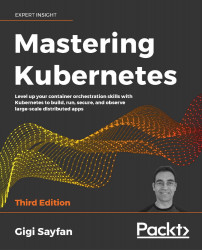Using kustomization for hierarchical cluster structures
This is not a typo. Kubectl recently incorporated the functionality of kustomize (https://kustomize.io/). It is a way to configure Kubernetes without templates. There was a lot of drama about the way the kustomize functionality was integrated into kubectl itself, since there are other options and it was an open question if kubectl should be that opinionated. But that's all in the past. The bottom line is that kubectl apply -k unlocks a treasure trove of configuration options. Let's understand what problem it helps us to solve and take advantage of it to help us manage Hue.
Understanding the basics of kustomize
Kustomize was created as a response to template-heavy approaches like Helm to configure and customize Kubernetes clusters. It is designed around the principle of declarative application management. It takes a valid Kubernetes YAML manifest (base) and specializes it or extends it by overlaying additional...



